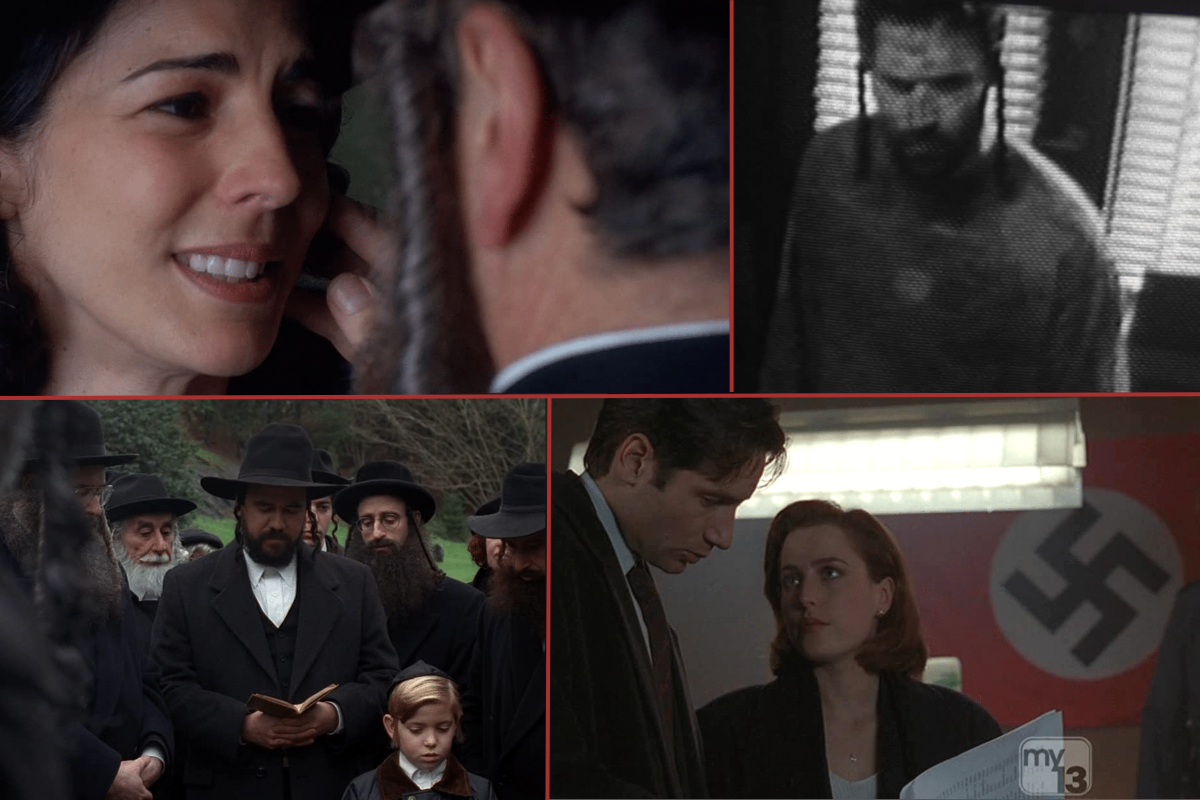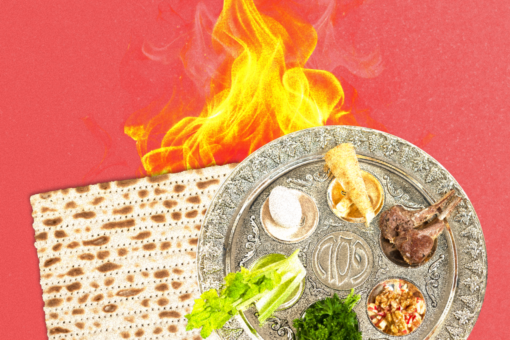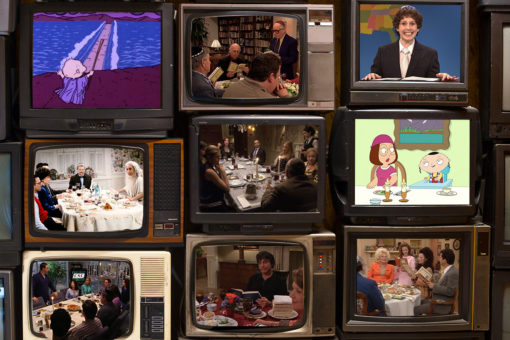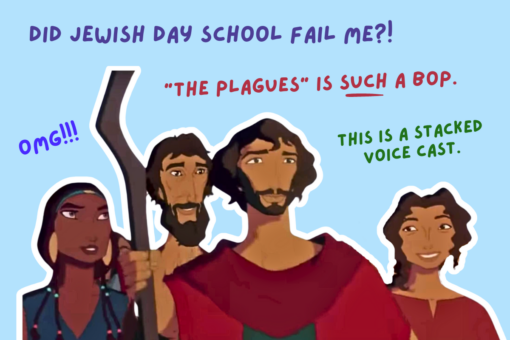Winter is the perfect time to watch “The X-Files”, a spooky ’90s show about two FBI agents, Mulder and Scully, investigating the paranormal. It has everything you need for a cozy night in — namely, a monster-of-the-week format that keeps you engaged, but leaves you guessing at the end. Truly, ‘90s horror is a salve for the pain of reality. With the rise in antisemitism, respectful stories about Jews can feel few and far between. An old episode of a paranormal TV show was certainly not where I expected to find one. But after watching the Jewish episode, “Kaddish,” I felt moved and comforted.
At first glance, “Kaddish” tells the story of the golem, a classic monster in Jewish folklore — a story told thousands of times. But it also features a surprisingly beautiful portrayal of a Haredi family. It is a Jewish journey told through loss, love and monsters.
The episode opens on a Jewish funeral in the ultra-Orthodox community of Brooklyn. The traditional mourner’s prayer, called the kaddish, is being said over a body. We follow Jacob Weiss, a rabbi in the community, and his daughter, Ariel. Ariel’s fiancé, Isaac Luria, was murdered in an act of Jewish hatred, and the community is grieving. At the same time, someone (or something) has been killing the perpetrators of Isaac’s murder.
Watching the community grieve, we get a glimpse of antisemitism in the ‘90s. We see familiar ugly depictions of Jews as money-hungry Zionists spread by white supremacists. But antisemitism does not define this episode. “Kaddish” is a story of love.
From the beginning, this episode is not about Mulder and Scully. They are visitors to this world, side characters in this story. This episode is about a communal loss. As Mulder and Scully disrupt the shiva for their investigation, we see them orbit the Orthodox community. They are moons of Saturn, following the community’s rituals. The mourning Jews are handled with care. Mulder and Scully are gentle and deferential when it comes to Jewish customs and mysticism. They are knowledgeable and empathic about the thousands of years of persecution against the Jews.
The focus on our rituals in this episode is a tribute to Judaism that refreshed a spark in me that the recent antisemitism has dulled — a spark I didn’t know had fled. Seeing these details on screen indicates a show that has done its research, a show that has intentionally tried to respect the culture. And they succeeded: a glimpse of numbers tattooed on the inside of a character’s wrist, Yiddish inflections when talking about guilt, a prayer scene that looked like my childhood. Mulder even needs to consult a rabbi to understand a Hebrew text.
What struck me the hardest about “Kaddish” was the kind and respectful portrayal of ultra-Orthodox Jews. The show gave us Haredi men and women shown as people. They were not villains or monsters or even “an extremist sect.” Media and TV often push an isolating narrative that demonizes the ultra-Orthodox: It’s one example of casual antisemitism. But in “The X-Files,” these Jews are just people embodying a history of survival. The Haredim in the story are complex. The character of Jacob is explored as a morally gray character. We learn of his traumatizing past as an orphaned Holocaust survivor, along with his crimes as a paramilitary member in Israel. He becomes a full, wounded person. “Kaddish” amplifies an authentic Orthodox voice; it is meaningful representation.
In a way, the lesson of the golem story parallels this. As the show describes, golems are “form without spirit.” The golem appears in the form of a man, made of flesh and bone, but is really a husk of clay. Risen from the earth, he mimics Adam, the original man. But, unlike Adam, the golem is just the shape of a man, an unfilled vessel. There is no holy spark of life — no soul.
Watching the depiction of Haredim as a loving people, we see how representation is not just about the images onscreen. Representation is not just limited to a cardboard cut-out of a culture. The shape of a person is not a person. These characters must be created with fullness. Without the culture’s soul, we are just watching golems.
In the end, the golem was not created by Jacob, the vengeful father-in-law. Hatred and violence did not bring him to life. Rather, love of a lost fiancé moved Ariel to raise the creature. Love inspired Jacob to protect his daughter, and love allowed her to finally let go of the golem and her lost partner. The story ends in love as well, with Ariel saying the kaddish.
We can learn from “The X-Files.” We see the patterns emerging today: the demonization of the ultra-Orthodox, the easy tendency to write off religious members of the community as strange or evil. Hatred tends towards those who are different. Being a religious Jew goes far beyond media depictions as villains or victims. The loving depiction of Haredim in “The X Files” grew out of an intention to show kindness to those who have suffered.
In the present, there has been a rising number of attacks on the ultra-Orthodox. We fear for their safety. At the same time, we know the outside world fears them. I wish others would model the care that went into to crafting a story about the ultra-Orthodox in this nearly 30-year old episode. If you are looking for a loving depiction of Orthodoxy, look to the past.
Plus, hearing Mulder say “Sepher Yetzirah” is well-worth the watch.
Late Take is a series on Hey Alma where we revisit Jewish pop culture of the past for no reason, other than the fact that we can’t stop thinking about it?? If you have a pitch for this column, please e-mail submissions@heyalma.com with “Late Take” in the subject line.




